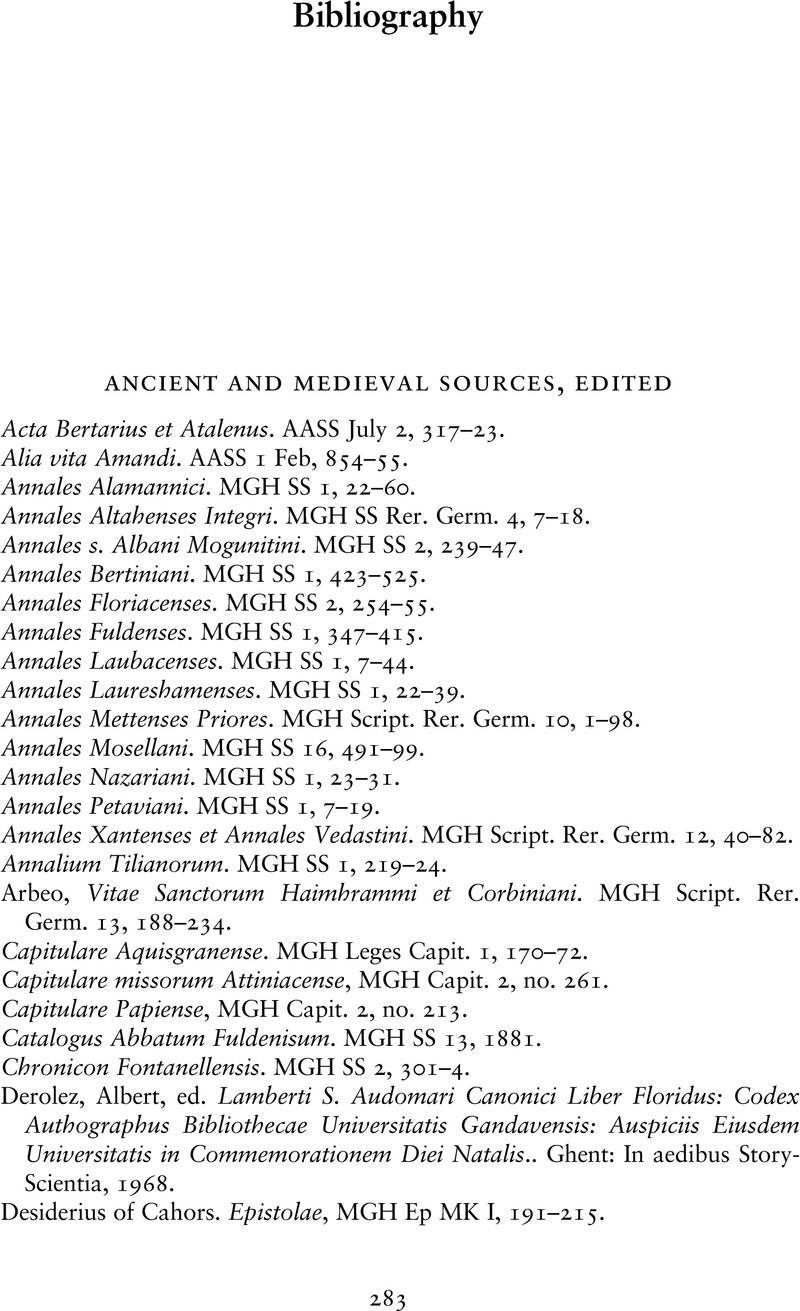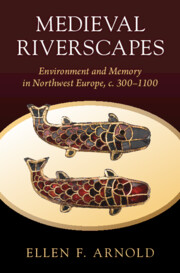Book contents
- Medieval Riverscapes
- Studies in Environment and History
- Medieval Riverscapes
- Copyright page
- Dedication
- Contents
- Figures
- Maps
- Tables
- Acknowledgements
- Preface
- Introduction
- 200–450: Late Antique Gaul
- 1 Poetries of Place
- 450–750: The Merovingians
- 2 Rivers of Risk
- 3 River Resources
- 750–950: The Carolingians
- 4 Rivers and Memory
- 950–1050: The Year 1000 Question
- 5 Ruptured Rivers
- 6 Meanderings
- 1050–1250: A New World?
- 7 The Same River Twice
- Bibliography
- Index
- Studies in Environment and History
- References
Bibliography
Published online by Cambridge University Press: 15 March 2024
- Medieval Riverscapes
- Studies in Environment and History
- Medieval Riverscapes
- Copyright page
- Dedication
- Contents
- Figures
- Maps
- Tables
- Acknowledgements
- Preface
- Introduction
- 200–450: Late Antique Gaul
- 1 Poetries of Place
- 450–750: The Merovingians
- 2 Rivers of Risk
- 3 River Resources
- 750–950: The Carolingians
- 4 Rivers and Memory
- 950–1050: The Year 1000 Question
- 5 Ruptured Rivers
- 6 Meanderings
- 1050–1250: A New World?
- 7 The Same River Twice
- Bibliography
- Index
- Studies in Environment and History
- References
Summary

Information
- Type
- Chapter
- Information
- Medieval RiverscapesEnvironment and Memory in Northwest Europe, c. 300–1100, pp. 283 - 298Publisher: Cambridge University PressPrint publication year: 2024
